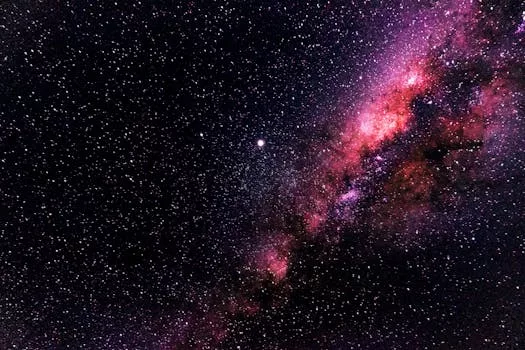
“
Beyond the Milky Way: Imagining New Worlds and Possibilities
Beyond the Milky Way: Imagining New Worlds and Possibilities is an exciting topic that has been fascinating humans for centuries. The possibility of life beyond our galaxy has sparked the imagination of scientists, philosophers, and science fiction writers alike. In this article, we will explore the latest in space exploration and the potential for life beyond our galaxy.
Introduction to Space Exploration
Space exploration has come a long way since the first human ventured into space in 1961. Today, we have robotic missions exploring the far reaches of our solar system and beyond. The discovery of exoplanets, which are planets that orbit stars other than the Sun, has opened up new possibilities for life beyond our galaxy.
The NASA and other space agencies have been actively exploring the Milky Way and beyond, using advanced telescopes and spacecraft to study the universe. The European Space Agency and the Russian space agency Roscosmos are also major players in space exploration.
Imagining New Worlds
As we explore the universe, we are faced with the possibility of encountering new worlds that are similar to our own. The discovery of exoplanets has shown us that planets can exist in a variety of sizes and orbits, and that some of these planets may be capable of supporting life. This concept is akin to the themes discussed in Galaxies of Dreams, where imagination transcends the night sky.
The search for life beyond our galaxy is an exciting and ongoing area of research. Scientists are using a variety of methods to search for signs of life, including the detection of biosignatures in the atmospheres of exoplanets. A biosignature is a sign of biological activity, such as the presence of oxygen or methane, that could indicate the presence of life.
Possibilities for Life Beyond Our Galaxy
The possibility of life beyond our galaxy is a topic of ongoing debate and research. While we have not yet found definitive evidence of life beyond our galaxy, there are many reasons to believe that the probability of life existing elsewhere in the universe is quite high.
One of the main arguments for the possibility of life beyond our galaxy is the vastness of the universe. With an estimated 100-400 billion stars in the Milky Way galaxy alone, and over 100 billion galaxies in the observable universe, the potential for life-supporting planets is immense. This vastness is beautifully captured in the concept of The Infinite Universe of Imagination.
Conclusion and Takeaways
In conclusion, the exploration of space beyond the Milky Way is an exciting and ongoing area of research. The possibility of life beyond our galaxy is a topic of ongoing debate and research, and the search for signs of life is an active area of investigation.
Some key takeaways from this article include:
- The universe is vast and contains billions of galaxies, each containing billions of stars and potential planets.
- The discovery of exoplanets has shown us that planets can exist in a variety of sizes and orbits, and that some of these planets may be capable of supporting life.
- The search for life beyond our galaxy is an ongoing area of research, with scientists using a variety of methods to search for signs of life.




